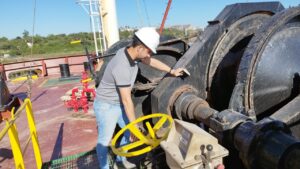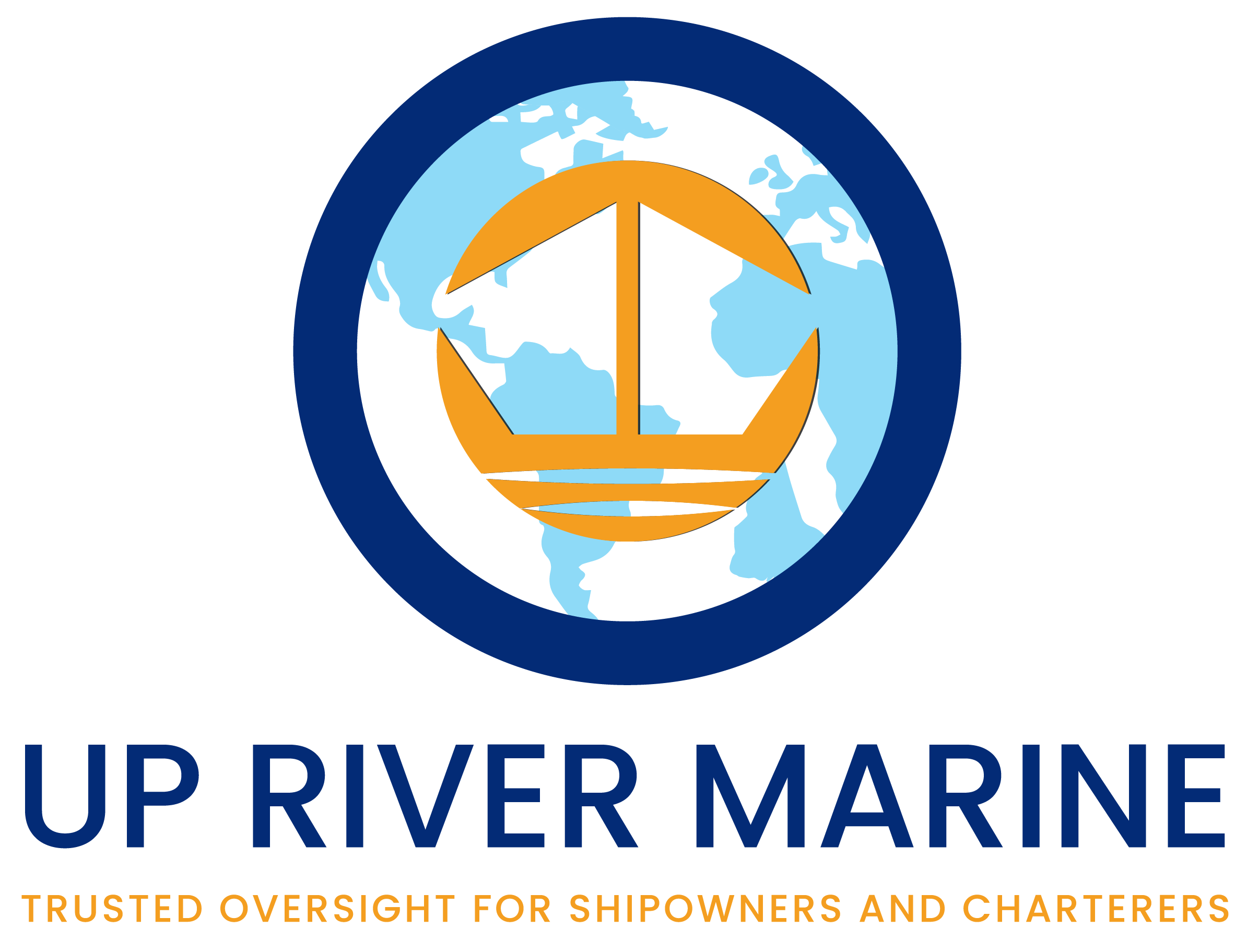During my years supporting shipowners and terminals in Argentina and Uruguay, I have seen firsthand that one of the most underestimated yet critical factors in safe mooring operations is equipment maintenance — especially winches and brake systems.
Well-maintained mooring equipment is not just about compliance; it is the true backbone that keeps the entire mooring system functional and safe.

Winch maintenance: more than a checklist
Winches require continuous attention beyond routine checklists. A properly maintained winch reduces the risk of sudden line failures, protects the crew, and ensures operational continuity.
Key aspects include:
- Brake condition and torque testing: The brake’s holding capacity must always be stronger than the motor, but it should never be over-tightened. Over-tightening may prevent the brake from releasing properly under high load, causing the line to break before the brake renders.
- Correct layering on drums: Only one layer should be kept on the tension drum section. Additional layers reduce brake effectiveness and can cause the line to jam or slip.
- Proper spooling and number of turns: Always follow the manufacturer’s guidance to avoid friction damage and reduce the chance of snap-back.
- Never use ropes or objects to secure the winch operating lever in place: This practice is extremely dangerous and can lead to unexpected movements.
- Guarding and inspections: Always keep gears and moving parts properly guarded. Replace missing guards immediately and inspect for oil leaks or wear.
- Cold weather precautions: In freezing conditions, ensure hydraulic lines are warmed and winches are kept running slowly to prevent damage.
Beyond maintenance: risk analysis and planning
Mooring safety is not only about the condition of winches but also about integrating these checks into a broader risk management approach.
During my work assisting Navios Terminal in Nueva Palmira port, Uruguay, I was directly involved in the development of comprehensive mooring plans and detailed risk analyses for berths 4 and 5, as well as the additional assessments requested for barge moorings.
In these projects, we evaluated different scenarios considering:
- Wind and current forces.
- Various ship and barge configurations.
- Situations that might compromise terminal safety, including unexpected vessel movements or failures.
- Distribution and arrangement of bollards (shore mooring points), ensuring adequate line lead angles and avoiding overload on specific bollards.
It is important to note that at Navios Terminal, the braking systems are located onboard the ships (within their winches), not onshore. Therefore, our analysis focused on the safe interaction between vessel winch systems and terminal bollard distribution, ensuring a robust mooring arrangement under all expected conditions.
This hands-on experience has reinforced my belief that equipment integrity must always be paired with practical, site-specific risk analysis.
My perspective
In my experience as Port Captain, I have seen that investing time in preventive maintenance and thorough planning always outweighs the cost of reactive repairs or accident investigations. A well-maintained winch and a well-thought-out mooring plan are not just technical necessities — they are essential commitments to safety and operational excellence.
Recommended guidelines and publications
It is strongly recommended to follow the guidance and best practices outlined in internationally recognized publications, such as:
- OCIMF Effective Mooring (4th Edition)
- OCIMF Mooring Equipment Guidelines (MEG4)
- OCIMF Guidelines for the Purchasing and Testing of Mooring Lines
- IMO MSC.1/Circ.1175 on shipboard winch maintenance and operation
These documents provide comprehensive technical criteria, inspection intervals, and safety recommendations that serve as a solid reference for any mooring operation worldwide.
We support shipowners, operators, and terminals
At Up River Marine, we assist shipowners, operators, and port terminals across Argentina and Uruguay in developing comprehensive mooring plans, evaluating equipment condition, and conducting detailed risk analyses. Our approach aims to protect both people and assets while ensuring smooth operations at every berth.
Mooring is an ancient skill that has evolved to accommodate larger ships and stronger equipment, but the hazards and risks faced by crew remain. Doing the right thing, with constant vigilance, is the only way to ensure ships are moored and unmoored safely.
Capt Martin Ruiz Diaz

